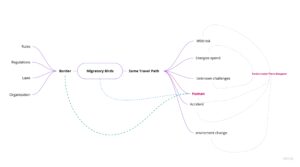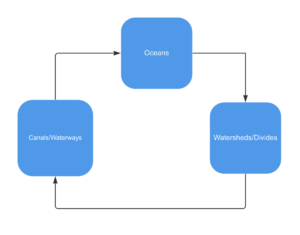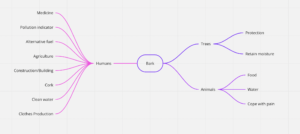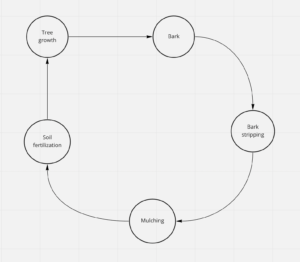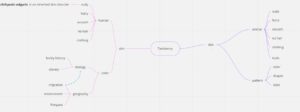The new knowledge that shocked me is just common sense in the eyes of the Great God.
For me, this book is subversive. Although I know this is nothing new in the eyes of the great gods because this is a publication more than 30 years ago, I am still very happy to encounter this book, even though it is 2022 this year. This kind of epoch-making book, no matter when you come across it, is worthy of gratitude because it can make people figure out things that they can’t figure out ever before.
The most shocking thing in this book for me is the construction of metaphors, the exposition of empiricism, and a series of discoveries that have been reflected from the perspective of metaphors. Now I want to say something that is not absolutely relevant to this book.
What I want to talk about is the meaning of literature. I didn’t like to read literature books much before simply because theoretical books can explain the truth clearly. The questions are clear, the answers are clear, and the process is also clear. While literary books often release the complexity behind things, with ambiguous questions, ambiguous answers, and ambiguous processes. Before reading a book, there is always a pre-set standard in my heart—“whether the hidden truth is explained clearly”. Therefore, literature books are often not as appealing to me as theoretical books.
Sometimes I see other people posting book lists on forums and reading hundreds of books in a year, most of which are literature books, I suddenly feel puzzled and even pity. Why do they waste a lot of time on this kind of thing? Of course, I never dare to deny or despise literature. Because among the people I admire, there are many people who spend a lot of time reading and studying literature. But I don’t understand that no matter the complexity or possibility, I can look for other disciplines to replace the inspiration of literature, such as history, anthropology, etc. What is unique about literature?
If “the essence of a metaphor is understanding and experiencing one kind of thing in terms of another”, the literature itself is just metaphors that are useful for enjoying a totally different angle of life. Some linguistics books have inspired me to find the irreplaceable and vital meaning of literature from an unusual angle. Let’s talk about the story first.
How to quickly find out the meaning of your life? One of the ways is to write a novel about the life you are currently experiencing, and see if it has an inner coherence and if the meaning is contained in the coherence. What is the meaning? To quote Whig: “Meaning does not come from empirical facts, but is given to it by the observer, so as long as he pleases and finds it convenient, meaning can be given to phenomena at any level at which the empirical facts are organized into a structure, Give it a name and think of it as an “entity” with some coherence and identifiable boundaries.” To condense life into a story is to delineate our lives into comprehensible empirical facts. If there is any inherent coherence to this story, it is the so-called “meaning of life”. Many great literary works, such as Margaret Duras’ “The Lover” and Fitzgerald’s “The Great Gatsby”, maybe the author trying to write autobiographical novels to find the meaning of his life.
The meaning of life found above is facing the past, and literature can also provide the meaning of life facing the future. In the modern age of “God is dead”, the lack of meaning is a very common status quo. We always feel that the choice of meaning in life is too many and too difficult, because we have to consider the attractiveness of a certain meaning to ourselves, and also consider the problem of how to walk in the future. As a result, many people gave up the difficulty of comparing meanings with each other, and either turned back to the embrace of religion, or fell into the emptiness of meaning. Specifically, it is very obvious in developing countries like China. For example, in China there are The number of Christians has exceeded the number of members of the Chinese Communist Party.
However, by reading some classic and serious literary books, we can experience a virtual life, feeling the various encounters, thinking, and countermeasures after a certain meaning choice, and the final look back-whether such a life has any meaning and meaning. For example, Goethe spent 60 years writing “Faust”, which makes people see the journey of an intellectual who is willing to sell his soul for the endless desire for knowledge. Another example is Huxley’s “Brave New World”, which will make people see how a life of unconditional pursuit of happiness has become boring and terrifying. Another example is “The Great Gatsby”, which makes people see the reality that in order to realize their dreams, they finally have to be disillusioned. The reason why literature is ambiguous is that the coherence in it needs to be defined by readers. Just like modern life, the meaning of life needs to be found and affirmed by itself. These are areas where theoretical books cannot help people make choices. Stories inspire people to find their own coherence through the experiences of others in finding coherence.
After talking about literature, I also want to talk about poetry.
What is poetry? Poetry is an attempt to be infinitely close to things. This definition is interesting as if the classic definition of information is “information is something that removes random uncertainty”. These definitions go beyond the relatively narrow field and rise to the height of philosophy. While it may seem that these definitions “do not live up to their name,” what is important is that they inspire us to look at the world from a different perspective. Just as someone went on to think above and said that information is the essence of the world, and poetry, in a sense, is the feeling of things that we can best grasp.
From the point of view of the book Metaphors, We Live By, any change in language, whether in content or structure, leads us to understand it differently. Perfect poetry, as a form of language, inspires all relevant metaphors and carries the lingering charm of the words at the time. Therefore, poetry is an attempt by our metaphorical animals to be infinitely close to things.
Poetry is not only a literary genre, but a way of metaphorical animals’ desire to be infinitely close to things.
Literature is not just a matter of literature. Just as the application of linguistics is beyond people’s imagination, literature has its unique and important role. To quote Calvino: “I have confidence in the future of literature because I know that there are feelings in the world that only literature can give us by its special means.”
